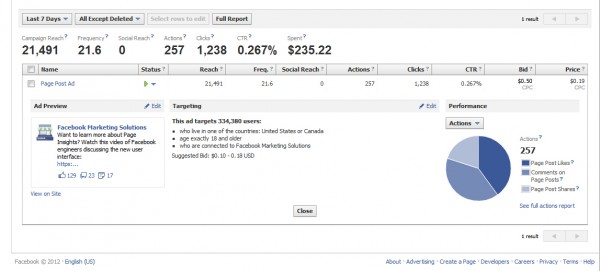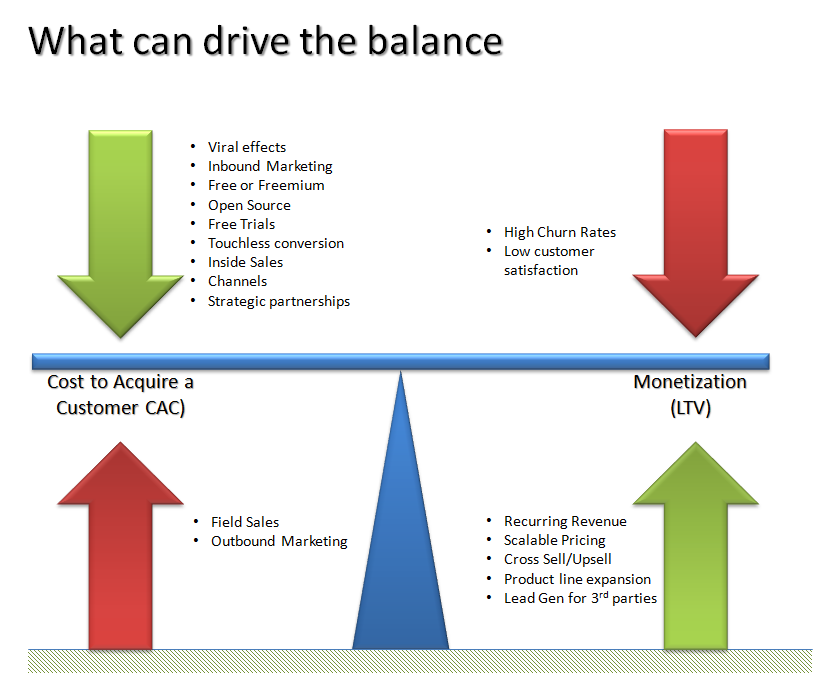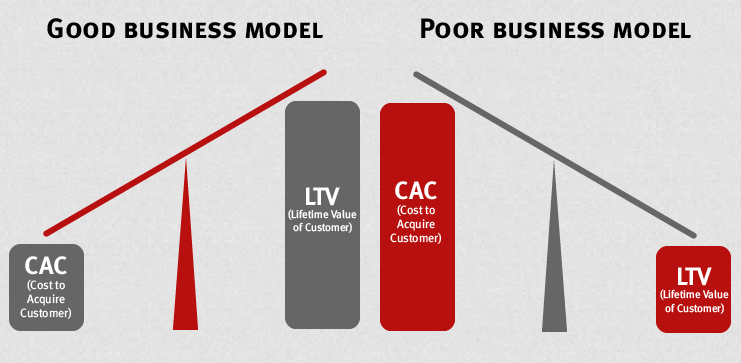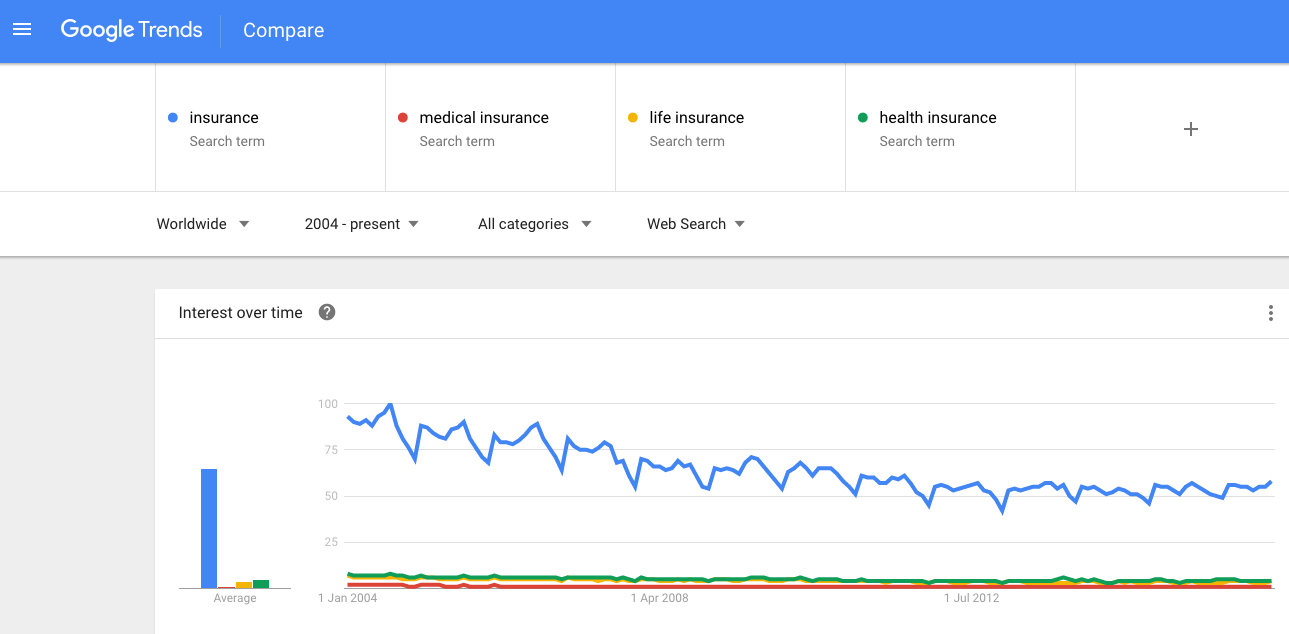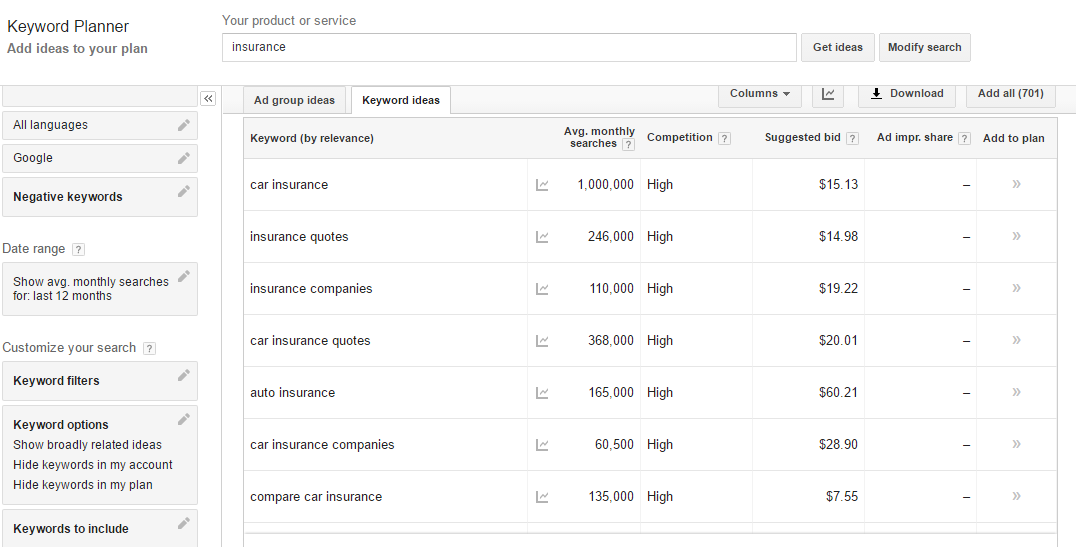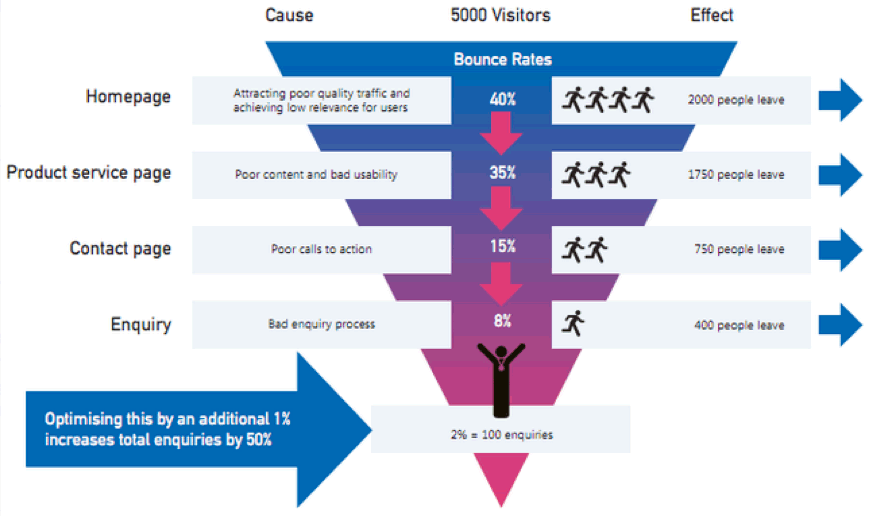How Much Should You Spend on Paid Ads? Here’s My Data-Driven Formula - Quick Sprout
How Much Should You Spend on Paid Ads? Here’s My Data-Driven Formula - Quick Sprout |
| How Much Should You Spend on Paid Ads? Here’s My Data-Driven Formula Posted: 26 Aug 2016 07:50 AM PDT A few years back when I first started NeilPatel.com, I spent $66,372.09 on paid advertising through LinkedIn, Google AdWords, Retargeter, Perfect Audience, and StumbleUpon ads. You might say that's a lot of money. It was. But I learned some valuable lessons. I learned which platforms and networks work best for targeting which audiences with which ads. Some of my takeaways? LinkedIn, for example, provided an excellent return on B2B ads, while Google still reigned supreme for B2C. StumbleUpon's conversion rate for paid products was woefully low. The top three paid ad spots on Google’s SERPs, for example, get 41% of the clicks. Even the best SEO techniques will only expose you to 59% of the viewing audience, and Google's knowledge graph and infoboxes are quickly cutting into that as well. Marketing professionals across the board agree that pay-per-click advertising works. The hard part is getting set up with a solid PPC plan to serve as your foundation. We need to know how much to spend, when to spend it, where to spend it, and how to spend it correctly. Those are tough calls to make, especially if you're a paid advertising newbie. The paid platforms can be complicated and confusing. What do you do with all these options, data, and metrics?
To answer these questions and be successful, instead of playing a guessing game, we need information and cold hard data. How PPC worksFirst, a quick lesson in PPC, which you probably already know. I'm including it for the newbs (and a refresher for the pros—it never hurts!). Google and other search engines allow you to purchase ad views on their platforms on a pay-per-click pricing model. The actual price is determined by the number of searches and ads running for a particular keyword or phrase. A popular search term, such as "insurance," can cost $59 per click to advertise, meaning you'll have to pay Google $59 for every lead it gets to your website by displaying your ad at the top of the search results for the terms you bid on. This isn't your typical example, however, as "insurance" is actually the most expensive PPC keyword by a large margin. These costs can be mitigated (and conversions improved) by targeting specific demographics, affinity groups, geographic locations, and mobile devices, which are generating more and more search traffic.
Of course, search engines aren't the only platforms for paid ads. Social networks and video ads are rising in popularity, as explained in this Search Engine Land article by Pauline Jakober. Video ads in search results aren't a reality yet, but with Alphabet owning both Google, the world's largest search engine, and YouTube, the world's largest video platform, it's only a matter of time. Determining CAC and LTVCPC isn't the same as your customer acquisition cost (CAC). What ultimately determines your CAC is your website's conversion rate. If each web visitor costs $59 to obtain and you're only converting 50% of your visitors, the customer acquisition cost for your PPC campaign is actually double your CPC, or $118 in the example of insurance. This doesn't take into account the rest of the marketing budget either, which also includes radio, print, television, social media, billboard, event marketing, and other customer outreach initiatives. The CAC is calculated by dividing all marketing expenses by the number of customers acquired in the same period. For example, if a company spent $10,000 on marketing in a year and acquired 10,000 customers as a result, its CAC is $1.00. Balancing the CAC with the customer's lifetime value (LTV) is how you create a successful business model.
So long as the LTV is larger than the CAC, your marketing efforts are working, and you have a sustainable business model. When the CAC rises above the LTV, you're in trouble. Because understanding this concept is critical, here's a graphic to help make the lesson sink in:
To calculate the LTV of a customer, you need to know how much each customer spends in an average purchase, how many purchases the average customer makes in a certain time period (day/week/month/year), and how long the average customer sticks around. Profit margins, discounts, customer retention rate, and gross margins are all factored in to the final formula, which you can find here. In the case of an insurance company, if an average policy costs $1,000 ($100 is profit), and the average customer is retained for 3 years, you're making $300 for every $118 spent on your PPC campaign, which is close to the actual average. Businesses make an average of $3 for every $1.60 they spend on AdWords. I'm sure you want to double your money. We all do. But if everyone is advertising for the keyword "insurance," they're missing quite a bit of traffic. You need to check associated keywords. Extending keyword searchesThere are millions of searches for insurance every month, but you have no idea whether those people are looking for medical, life, business, home, phone, or auto insurance.
It's still worthwhile to advertise on a single keyword, but with such a high CPC, you shouldn't pour all your budget into that one highly competitive keyword.
"Car Insurance," "insurance quotes," "auto insurance," "compare car insurance," and "car insurance quotes" all have different prices for different search volumes. Spreading your budget across all these keyword phrases increases the chances that your ad is seen by people searching the web in different ways. At this point, your overall CPC will be determined by the cost and frequency of each individual search term. You can afford to buy some traffic for "insurance" and "auto insurance" so long as it's balanced out with "compare car insurance," "insurance quotes," and "car insurance quotes." You now have a potential pool of customers that’s three times the size of your original pool, which maximizes the reach of your ads. Continue this research into five- and seven-word long-tail searches for the best results. For example, phrases such as "Best car insurance company in Arizona" or "Cheapest car insurance for 2005 Ford Mustang" are great ways to target specific regions or car owners. The longer a search term, the more specific information a customer is typically looking for. While searches may be lower, bids will also be lower, allowing you to obtain some customers for $5 and others for $50 while still maintaining a low CAC. Portioning budgets for each keyword is critical as this is one of two places where smart marketers maximize their ROI. The other is targeting specific customers using Remarketing lists for search ads. Targeting the right customersA few years ago, Google moved beyond focusing on just keyword searches to looking at contextual information about customers. The most valuable result from this change was RLSA—remarketing lists for search ads. RLSA lets you target customers who have visited your website previously.
Bounce rates are high on websites, but just because a customer leaves doesn't mean they're not interested. Shoppers may visit a site 9 times before purchasing, so the more they visit, the further down the conversion funnel they may be. Take a look at this sales funnel:
For every 5,000 visitors, only 100 inquiries are received, so why waste ad money on those 100 when you should be focusing on converting the other 4,900? Using RLSA, you can optimize bids to increase your ROI. Tirendo Tires, for example, increased sales by 22% and conversions by 163% simply by raising their bids on previous homepage visitors. World Travel Holdings increased ROI by 30% by using RLSA to target previous site visitors for broad search terms (like "insurance" in the example above). By adding the remarketing tag to your website, you allow Google to further segment your visitors and hyperfocus your PPC ad campaigns. Of course, the downside to these PPC ad platforms is you can't determine who is already a paying customer. I constantly receive ads for products and services I've already purchased, which I know is wasting the advertiser's money. You also have to be wary of disgruntled customers and employees who may purposefully click your ads without making a purchase. (Seriously, people do this in order to drive up the cost of your ad spend.) Segmenting and targeting ads in any way is an essential step toward optimizing them and getting the most bang for your marketing buck. ConclusionPPC is still one of the most popular methods of advertising, with over $500 billion spent annually on it. It can be exciting to envision massive ROI and all the extra sales you'll be able to make by simply toggling some ads and letting them run. Before spending any money on a campaign, however, it's important to understand what keywords and searches have the best conversions for your site. Targeting these searches with ads moves you to the top of the search results, giving you optimal visibility. Beyond just search terms, it's also important to target customers at specific points in the sales funnel. The actual cost of your PPC campaign isn't as important as the ratio of CAC to LTV. It's okay to spend a little more if you are marketing a more expensive product or a company with higher retention rates. So long as your overall marketing budget doesn't outweigh the lifetime ROI from customers, you've built a sustainable business model. How much are you spending on paid search? Are you getting a solid ROI? |
| You are subscribed to email updates from Quick Sprout. To stop receiving these emails, you may unsubscribe now. | Email delivery powered by Google |
| Google Inc., 1600 Amphitheatre Parkway, Mountain View, CA 94043, United States | |
